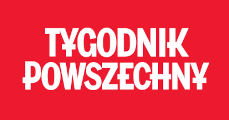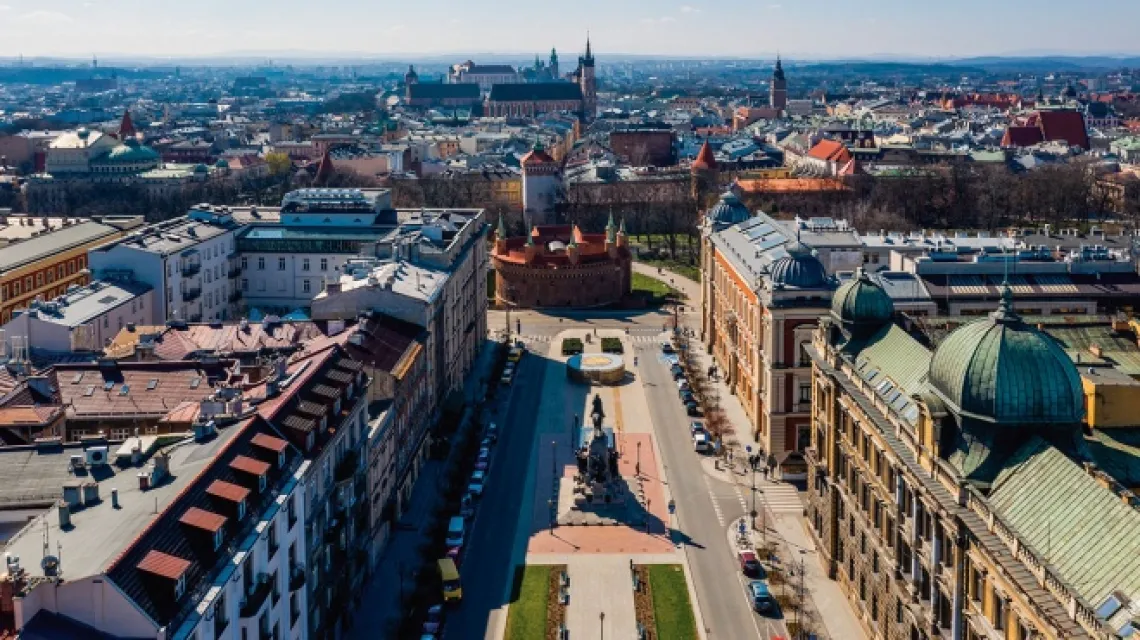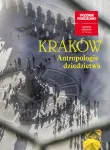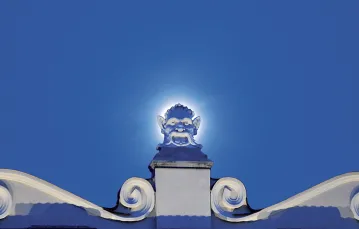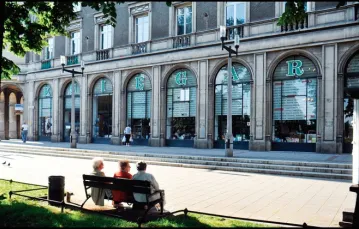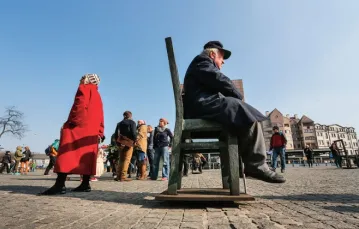Wykupienie dostępu pozwoli Ci czytać artykuły wysokiej jakości i wspierać niezależne dziennikarstwo w wymagających dla wydawców czasach. Rośnij z nami! Pełna oferta →
Poles are fond of monuments. Marek Karwowski, one of the protagonists of the popular 1970s Polish TV series “Being Forty”, climbs onto a large rock on a plot of land which his father bought to build an American-style bungalow, and exclaims: “Mummy! I’m a monument!”.
Monuments offer perfect compensation for our conscious or subconscious inferiority complex, for indecisive or not quite with it. They attest to our bravery, righteousness, piety, and integrity. At the same time, they claim both the minds of the people who view them and the space which they occupy. They constitute visible points that focus feelings and memories or indeed which create them, thus manipulating the viewer. Relatively easy to construct (after all, at its simplest, a monument can take the form of a memorial stone or metal plaque with engraved lettering), they are indispensable elements of great and small political struggles and electoral campaigns; they serve as witnesses to manifestos and declarations.
Is Kraków a city of monuments? No more so than other major historical Polish cities. It is perhaps unique for its pre-1918 collections, of which the statues in the Planty Park and the busts in the Jordan Park are particularly interesting examples. There have also been several edifying and important monuments which were ultimately never erected and remained in the realm of dreams, such as the imposing and extraordinary “Procession to Wawel” by Wacław Szymanowski, dating from 1907-1911.
Moreover, Kraków can boast a few successful modern projects which have transcended the traditional definition of the monument and have managed to command the space around them. These monuments transform viewers into actors on a stage which they are only just getting to know. One such project is the group of chairs on plac Bohaterów Getta (Heroes of the Ghetto Square), which commemorates the Holocaust. There, we are confronted with an overwhelming absence, emptiness, and helplessness in the face of a terrifying testimony. Very similar chairs, arranged in rows in the place where the synagogue in Leipzig once stood, somehow lack this forceful impact.
History Along a Single Axis
Apart from the pathos of great historical events, there are also “smaller”, though equally moving, stories to be found in Kraków’s monuments. One of these is Dżok the Dog, perhaps the most authentic and poignant of all modern monuments. The simplicity of the story it tells is endearing, and this is in no way disturbed by its literal form: a faithful dog patiently waiting for his master, who has passed away. The dog will probably be removed from its current location as the message emanating from up above is to commemorate a completely different type of history – grand history, which is now being forcibly imposed onto Kraków’s spaces. The Home Army monument, which is planned for the Vistula riverside, will go against everything that Dżok signifies.
However, it will not be able to compete with the most important ideological axis in Kraków created by monuments. Three of these, linking the Royal Castle, the Market Square, and the suburbs, provide a focus for historical codes from the time when Poland was striving for independence. They are: Tadeusz Kościuszko on horseback near Wawel Hill, Adam Mickiewicz on his high pedestal commanding the eastern side of the Market Square, and finally the group gathered around King Władysław Jagiełło on the Grunwald Monument opposite the Barbican. Arranged almost in a straight line and close to one another, they offer a coherent and original lecture on the history of Poland and Kraków. Interestingly, all three met a similar fate during World War II and returned to the cityscape at a similar time, albeit in different ways. This gives them additional strength and meaning.
Monuments to the Pope: Copy and Paste
But Kraków is also the “spiritual capital of the country”. Everyone knows the papal window, the figures and reliquaries of saints, the church bells, and finally… monuments to the Pope. Bronisław Chromy, the author of Dżok (but also of the Wawel Dragon), was right when he told me a long time ago that “after centuries of humiliation, the Poles swooped on this prey like vultures”. John Paul II confirmed the nation’s importance and a tsunami of worship and adoration followed. This wave swept across the whole of Poland, but its modus operandi resembled that of the glacier, as it left hundreds of small, medium-sized, and vast monuments in its wake. Most of those were erected in Kraków and its surroundings area, from Wadowice to Nowy Sącz.
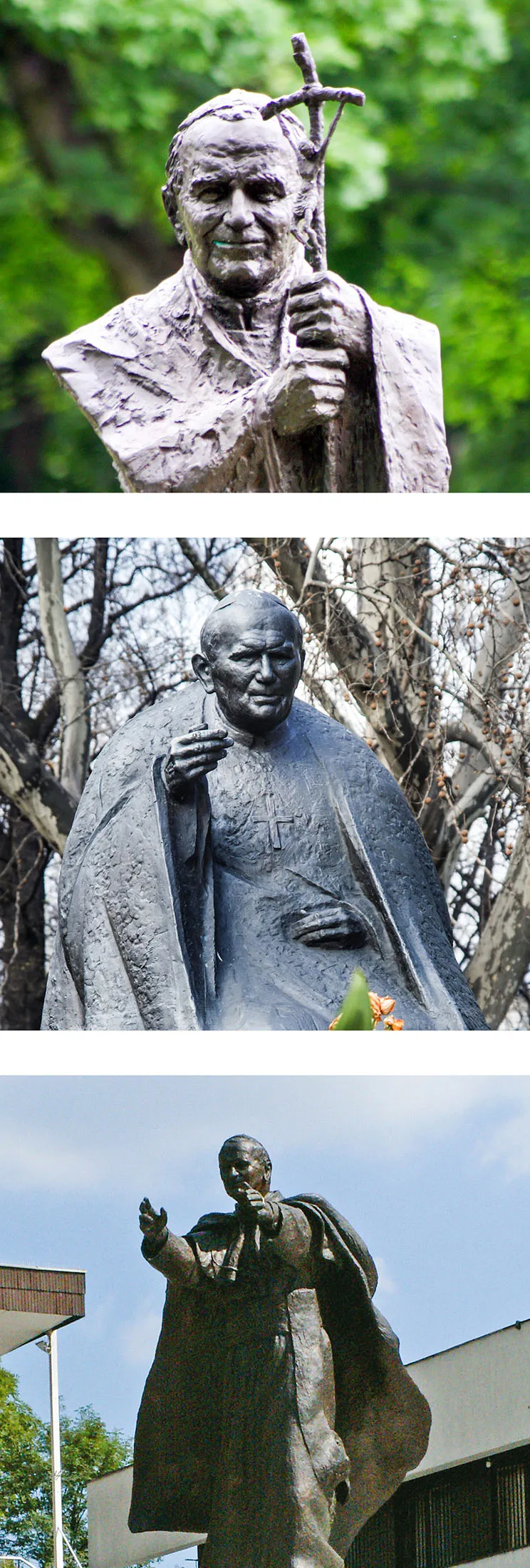
It was an interesting study in a lack of inhibition and in consent to the surfeit, trashiness, and mindlessness of repetitive forms that are produced carelessly and on a piecework basis. The staggering pace of their production and the pressures exerted by those who commission them prevent such monuments from becoming works of art.
Up to a certain point, papal monuments were put up in places which could boast genuine associations with the life of Karol Wojtyła and later John Paul II, or which he had visited, but those restrictions were later abandoned. Mistrzejowice, the Lord’s Ark Church, Łagiewniki, Mogiła, Skałka – defunct statues mark the route of papal visits. Even the military cemetery, specifically the tomb of Karol Wojtyła’s parents, acquired a monument to the Pope (although it was not installed and unveiled until after the death of John Paul II).
In most cases, these statues do not contribute anything more to the surrounding spaces than contemporary (and older) sculptures of patron saints. The latter carry a certain message – they present the idea underlying holy places by referencing those who were canonised. Thus, at the church in Mogiła, we find St Bernard; St Szymon of Lipnica stands close to the Observant Church; and the Capuchins wish to remind us of Padre Pio. In other places, the Pope becomes the reference.
A typical example is the monument in the courtyard of the Bishop’s Palace. A gift from Italy, it was brought to Kraków as early as in 1980 as the first papal monument. It is difficult to say what should be done with this mediocre work, which was installed in a courtyard partially accessible to the public. This question about the permanence and meaning of papal monuments becomes understandable in the context of the papal window in the Bishop’s Palace which was boarded up, perhaps as a sign of helplessness in the face of its message, but also in the context of certain doubts and controversies.
The Błonia Park: Simple and Compelling
Apart from the aforementioned Kościuszko on horseback, there are no other free-standing monuments on Wawel Hill. No exception was made for the Pope either. The statue designed by Gustaw Zemła, which was only erected a decade ago, was placed there illegally, since no permit had been issued for its construction, but was then quickly legalised. There is nothing original about this statue. The well-rehearsed pose does not bring anything new to the table. Perhaps a better choice here would have been Luciano Minguzzi’s work – another gift from Italy, which was sent to Wawel in the 1980s. However, its form was deemed unacceptable at the time and it was moved to… Wadowice, the Pope’s hometown, of all places (it was discreetly hidden from view during John Paul II’s visit there). Fortunately, the statue in front of the cathedral does not disturb the surrounding space as much and is not as distasteful as the notorious monument to the 16th-century Jesuit preacher Piotr Skarga on plac Marii Magdaleny.
John Paul II is of course present in the Altar of the Three Millennia, which was constructed in the courtyard of the Skałka Church at the same time as the monument on Wawel Hill. However, this altar represents a separate group of works which are meant to fulfil a comprehensive documentary and educational function. Hence, the Pope is condemned to standing wearily under a massive pillar.
The collection of busts in the Jordan Park belongs to the same category. It was begun at the end of the 19th century, but a hundred years later was supplemented with a set of figures which have not been firmly established as worthy of such commemoration and arouse strong emotions. Obviously, this collection also includes a bust of the Pope. It is not a particularly good one, perhaps because its author, Stefan Dousa, had previously scored a resounding success in the field of papal monuments. His outstanding work, erected in 1997, stands just a stone’s throw away in the Błonia Park, and is the simplest and the most interesting of monuments to the Pope. This rock from the White Water Valley in the Tatra Mountains, which rests on small supports as if levitating above the ground, its sharp lines sometimes compared to a boat, bears the inscription “You are the Rock”. A terse and yet profound message.
Dashed Hopes
The simplicity and strength of this monument cannot be matched by any other. The latter include figures which would not pass muster in the third semester of art studies or photographed poses that have been literally transferred to structures cast in bronze. Not much good can be said about the pompous and empty throne of Christ with the Pope crouching beside it or about the gesture of greeting and blessing which is reproduced in many other monuments (even if, in itself, the gesture is touching). When sculpting the Pope’s figure, most artists – often recognised, award-winning, and experienced sculptors – worked on their knees rather than doing it well. They did not have enough distance, enough time or enough idea about what to do with the surrounding space. More than a decade after the high-water mark in the construction of papal monuments, it may be said that the hopes surrounding them have been dashed.
Today, their huge numbers are increasingly irritating or discouraging, leaving the viewer indifferent rather than engaged. ©
Dr hab. KAZIMIERZ S. OŻÓG is an art historian and professor of the Faculty of Art at the University of Opole. His research interests include the memory of places, patriotic iconography, and the history of art in the borderlands. He is the author of, among others, a monograph on the monuments of John Paul II (2007).
KRAKÓW. ANTROPOLOGIE DZIEDZICTWA – CZYTAJ CAŁY DODATEK SPECJALNY >>>
KRAKOW. ANTHROPOLOGIES OF HERITAGE – READ MORE IN ENGLISH >>>
